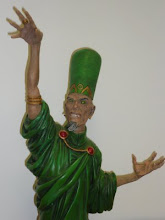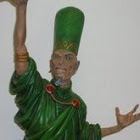
This book is a very enjoyable tour around some of the urban legends and stories that are part and parcel of comic book history. While it is unlikely that anyone who was not a comic book fan to begin with would pick up the book, a reader would not have to be one to enjoy it. This is the major strength of the book, it is neither excessively fannish nor is it aimed exclusively at the non-fan. It is straightforward and clear, written in a plain accessible way that is a pleasure to read.
There are 130 stories in the book and they range from the truly odd and sad, one of the creators involved in Crime Does Not Pay was found guilty of manslaughter and served a prison sentence to the wonderful, the pieces about Superman being a spy. Brian Cronin wears his research lightly and provides all the details needed in a concise fashion required to appreciate the point of each story.
There is no particular theme to the book and this serves it well. The stories cover a wonderful range of back stage antics concerned with the comic book industry and the detail is impressive and frequently very amusing. The illustrations and excerpts are very well chosen and the quality of the reproductions is high. This book is both highly enjoyable and very informative, a pleasure.








